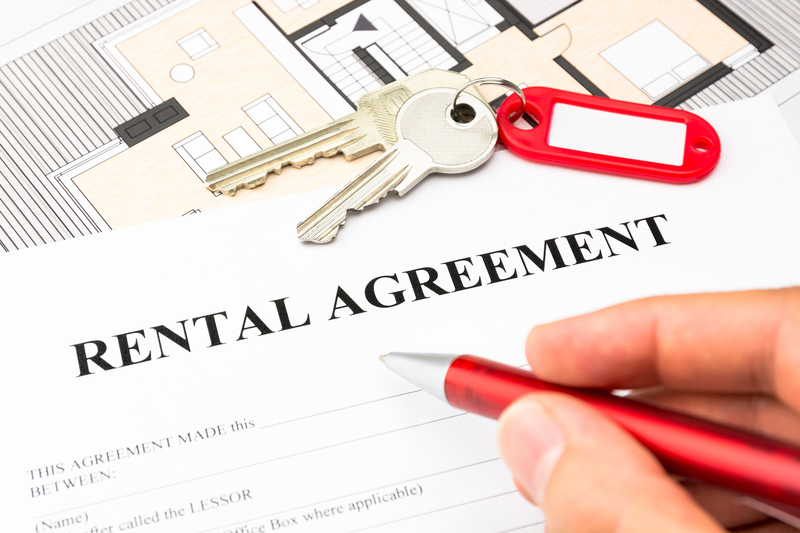A Complete Walkthrough for Moving Your Bed and Mattress
Relocating to a new home is always exciting, but one of the most challenging items to move is your bed and mattress. These bulky, awkward, and sometimes fragile items require careful planning and handling to ensure that both your bedframe and mattress arrive at your new place in pristine condition. In this comprehensive guide, we'll take you through every step for moving your bed and mattress hassle-free, ensuring you're well-prepared for the big day.

Table of Contents
- Why Moving a Bed and Mattress Can Be Challenging
- Essential Preparation Before Moving Day
- Step-by-Step Guide to Moving Your Bed and Mattress
- How to Protect Your Mattress and Bedframe
- Transporting the Bed and Mattress Safely
- Reassembling Your Bed in the New Home
- Common Mistakes to Avoid When Moving a Bed and Mattress
- Frequently Asked Questions
Why Moving a Bed and Mattress Can Be Challenging
Moving a bed and mattress is not as easy as it sounds. Here's why:
- Size & Bulkiness: Mattresses and bed frames are often larger than standard doorways and stairwells.
- Weight: Some beds, especially those with wooden or metal frames, are quite heavy.
- Fragility: Mattresses can get damaged, bent, or dirtied. Bed frames--especially with slats or intricate parts--might get scratched or broken.
- Complexity: Disassembling and reassembling beds, managing all the hardware, and keeping track of every part is more complex than it seems.
Understanding the challenges can help you anticipate problems and plan accordingly.
Essential Preparation Before Moving Day
1. Gather the Right Packing Supplies
- Mattress bag or cover for protection against dirt and moisture.
- Furniture blankets or pads to wrap bedframe components.
- Bubble wrap for delicate or polished pieces.
- Sturdy tool kit (screwdriver, Allen keys, wrench) for disassembly.
- Ziploc bags or small containers for storing bolts, screws, and small hardware.
- Labels or masking tape and marker pens to tag disassembled pieces.
2. Measure Everything
Before you even touch your bed or mattress, measure the dimensions of both the mattress and bed frame sections. Compare these to the size of stairways, doors, and elevators at both your current and new home. If something won't fit, you'll need to rethink your moving mattress and bed plan.
3. Clear a Path
Remove any tripping hazards, including rugs, boxes, and clutter. Open doors and windows where necessary to make moving large objects easier.
Step-by-Step Guide to Moving Your Bed and Mattress
Step 1: Strip the Bedding
- Remove all sheets, pillows, blankets, mattress toppers, and pillow protectors.
- Wash and pack bedding separately in clearly labeled bags or boxes.
Step 2: Disassemble the Bed Frame
- Find the assembly points (usually screws or bolts).
- Take photographs as you work--these will be invaluable when you rebuild the bed at your new home.
- Carefully remove slats, support beams, headboard, and footboard.
- Place screws and bolts in labeled bags; tape these bags securely to one of the larger components.
- Wrap wooden or metal parts in moving blankets, bubble wrap, or towels.
Step 3: Secure the Mattress for Moving
- Slip the mattress vertically into a mattress moving bag or cover--it protects from dirt, scuffs, and moisture.
- Seal the bag tightly with packing tape. Many mattress bags have handles for easier carrying.
- If you don't have a dedicated mattress bag, use a heavy-duty plastic cover and secure it at the ends.
Step 4: Move the Mattress and Bed Frame
- Always carry the mattress on its side with help from at least one other person.
- For stairs, tilt and bend as needed, but never fold a mattress unless it's specifically designed for folding.
- Walk slowly, and communicate clearly with your moving partner.
- Transport bed frame sections separately and keep hardware attached or taped securely to the frame.
How to Protect Your Mattress and Bedframe
Mattress Protection Tips
- Avoid direct contact with floors, truck beds, and dusty surfaces.
- Use mattress bags--they are a minimal investment that preserves your mattress's hygiene and structure.
- Don't tie mattresses to car roofs or bend over excessively, as this may cause permanent damage.
Protecting Bed Frame Components
- Wrap sharp corners and fragile parts independently.
- Tape moving blankets securely in place so they don't shift during transit.
- For beds with glass or delicate wood, add extra padding and bubble wrap.
Transporting the Bed and Mattress Safely
Choosing a Suitable Transport Vehicle
- Use a moving van or box truck for long or large mattresses and beds.
- A pickup truck may work for short distances, but secure the load thoroughly with straps and avoid exposure to weather.
- Never attempt to transport a mattress on top of a small car--it's unsafe and could damage both your mattress and vehicle.
Loading and Securing Your Mattress in the Vehicle
- Stand the mattress up on its side against an inside wall of the van to conserve space.
- Secure with straps or ropes to prevent sliding or falling during driving.
- Place bed frame parts on the floor and wedge them so they don't move.
- Never put heavy boxes or furniture on top of your mattress.
Reassembling Your Bed in the New Home
Setting Up the Bed Frame
- Lay all parts out and refer to your pre-move photos for guidance.
- Assemble the main frame first, then attach slats, support beams, and finally the headboard or footboard.
- Use your labeled hardware bag to find each bolt and screw quickly.
- Tighten all joints and fittings--don't overlook this, as a loose bed can creak or collapse.
Unwrapping and Placing the Mattress
- Remove the plastic mattress bag.
- Inspect both sides for any damage or moisture.
- Lay the mattress flat on the bed frame--never stand mattresses on their sides for storage, as this can deform the springs or foam over time.
Finish by remaking your bed with fresh linens--your first night in your new home will be that much cozier!
Common Mistakes to Avoid When Moving a Bed and Mattress
- Forgetting to measure entryways: Many moving day mishaps come from beds or mattresses not fitting through doors or stairwells. Measure twice, move once.
- Not using a mattress protector: Dirt, water, and rips can easily ruin even the best mattress during a move.
- Using poor lifting technique: Always lift with your legs, not your back, and get help--it's not worth the injury.
- Losing screws or hardware: Keep everything labeled and taped to avoid scrambling for replacements later.
- Overloading the moving truck: Don't place heavy or sharp items on top of bedding or mattresses--this flattens and damages them.
Frequently Asked Questions
Can I move a mattress by myself?
You can move a twin or full-size mattress if you're strong and have the right equipment. However, larger mattresses like queen or king require at least two people for safety and ease.
What's the best way to move a memory foam mattress?
Memory foam mattresses are flexible but heavy. They must be moved flat if possible, or tightly rolled and bagged (if the manufacturer allows). Never fold sharply, as it may damage the foam structure.
How do I keep my mattress clean during the move?
Use a mattress bag or plastic cover, and never place your mattress directly on the ground, especially outdoors or in a moving truck.
Should I hire professional movers for my bed and mattress?
If your bed is particularly heavy, intricate, or valuable--or if you have health restrictions--it's a good idea to hire professional movers. They have the experience, equipment, and insurance you need for peace of mind.
Do I need to disassemble the bed frame completely?
Almost always, yes. Partial disassembly increases the risk of breakage, awkward transport, and lost components. Take it apart completely for a safe move.

Final Thoughts: Moving Your Bed and Mattress with Confidence
With the right preparation, patience, and proper techniques for moving a bed and mattress, your most essential piece of furniture will survive the journey to your new home without a scratch. Remember to protect your mattress, keep all hardware organized, and take advantage of help when available. Good luck with your move--and enjoy restful nights in your new space!



